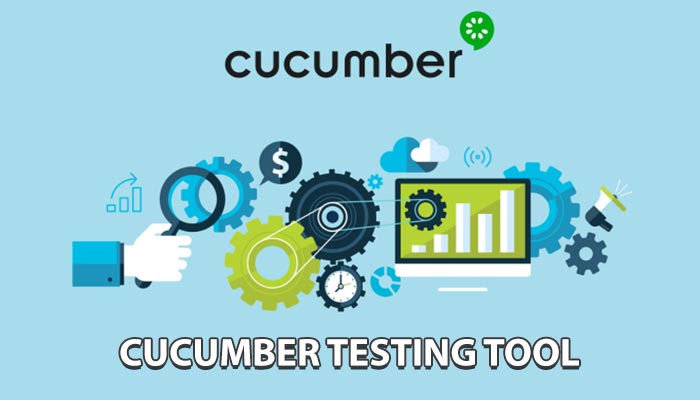Cucumber Testing: Definition and Usage
Testing software is a vital part of the development process. It is especially valuable when done in a way that all enterprise owners can comprehend. One such tool for testing software in a business environment is Cucumber. This automation testing tool utilizes the principle of behavior-driven development to test the expected usage of the software.

We at Copperchips, a custom software development company, have been utilizing Cucumber since its inception. Before delivering any digital product, we make sure that every product goes through our Cucumber Testing.
Cucumber Tool’s BDD approach not only enables developers to specify behaviors to test, for instance, correct or incorrect logins but also allows customers to do the same. This article will enlighten readers about Cucumber Testing, the associated benefits, and how to leverage it for software development.
What Do You Mean By Cucumber Testing?
Cucumber Testing is a practice of enabling developers to test the software by running various scenarios to check if they produce the intended results. Even customers and business partners can write Cucumber test cases, which can assist in supporting customer satisfaction and efficient testing.
We at Copperchips, realize that Cucumber testing is used to assess the behavior of software functionality. Hence, we use the Cucumber tool for checking incorrect passwords, usernames, variable dates, insufficient funds in banking scenarios, and other potential issues that users might encounter.
When Is It Appropriate To Utilize Cucumber Testing?
Cucumber Tool is a must when live documentation needs to be created within behavior-driven-development. This automation testing tool breaks test scenarios down into a Given-When-Then structure and reads simple language that non-technical users can easily comprehend.
Cucumber Tool can develop test cases that one can reuse for the development needs that may arise in the future. This form of BDD even happens throughout the development process instead of on completion of the entire program or app development.
Elements of Cucumber Testing
Cucumber Testing contains the following elements which enable custom software development companies like Copperchips to perform testing hassle-free and efficiently.
Cucumber Testing contains the following elements which enable custom software development companies like Copperchips to perform testing hassle-free and efficiently.
Features
In Cucumber Testing, the term “feature” refers to the specific part of the software that is under the process of testing, such as logging into an account, transferring money, or reading a message. The vital parts of the feature are the keyboard, the name, and an optional description.
Scenarios
A scenario in the Cucumber tool is the sequence of steps in which the developers and customers are supposed to test. One can apply many scenarios to a feature to test for functionality and performance, such as attempting to log in with an incorrect username or password.
Steps
Steps in Cucumber Testing refer to the circumstances of a scenario which are written in the Given-When-Then format. “Given” describes the initial condition of a variable. “When” on the other hand, adds the user’s actions, and “Then” describes the results.
Tags
This element in Cucumber Testing enables users to insert other kinds of tags utilizing the familiar @ prefix to keep the automation testing process organized. However, the mandated Given-When-Then tags sometimes eliminate the need for extra tagging because of their built-in organizational structure.
How to Utilize Cucumber Testing?
Here are the well-known steps of how developers can implement Cucumber Testing in their software development process and how we at Copperchips, have been doing the same for ages.
Install Cucumber
To test one’s software, one needs to install the Cucumber Tool by first visiting the official website for a direct download link. Developers need to keep in mind that some Cucumber iterations are free while others are paid.
Writer Test Scenario
Once developers have installed Cucumber Tool, they can test scenarios against their code. Though Cucumber Tool was originally utilized to test Ruby, today it works with almost all contemporary programming languages.
Because Cucumber Tool scenarios utilize the company’s Gherkin plain text language, one can articulate them like ordinary writing. Gherkin’s keywords have also been translated into multiple languages to enable Cucumber Testing around the world.
Because Cucumber Tool scenarios utilize the company’s Gherkin plain text language, one can articulate them like ordinary writing. Gherkin’s keywords have also been translated into multiple languages to enable Cucumber Testing around the world.
Define Your Steps
When you have established the scenario that you wish to test, you can then define the steps taken in that scenario. This is exactly when the Given-When-Then structure should be used to enable developers to show the initial circumstances, the user’s possible action, and the result.
Run Your Test
With one’s test scenario and steps in place, one can run the test utilizing a variety of possible situations which users might encounter. Developers can use these test results to drive development based on their software’s performance and share outcomes with the entire team within Cucumber.
Apply Your Results
The Cucumber Testing tool enables users to run reports and revisit the change history of a product over the course of testing in a way that one can share with the team. Sharing this information throughout the BDD process is a vital way to accelerate the implementation of the solutions. The documentation of Cucumber testing is written in natural language. This means that anyone can access and comprehend a product’s automation testing history.
Perks Associated with Cucumber Testing

We at Copperchips, are a custom software development company. We’re very well aware of the perks associated with Cucumber Testing. Further enabling us to choose it over any other tools of automation testing.
Plain Text Language
Cucumber Testing tool’s plain text language interface enables stakeholders. People who don’t know code to perform testing scenarios. Further enabling stakeholders to get involved in the development process directly.
Versatility
Cucumber Testing works with almost every contemporary programming language. This means that no matter what language one’s software is programmed in, one can use the Cucumber tool for BDD throughout the development process.
Streamlining
BDD is designed to expedite the development process. Everyone involved in the automation testing department relies upon the same scenarios. Scenarios are basically requirements, acceptance criteria, test cases, and test scripts all combined into one. With scenarios by the side, there is no need to write any other artefact. The modular nature of Gherkin syntax speeds up automation testing. Moreover, scenarios can be utilised as steps to reproduce failures for defect reports.
Reusable Code
Automation Testing done with Cucumber can be recycled for other software development purposes. If one has products that perform similar functions, this could be an extremely useful feature. Moreover, the Cucumber tool is quick and easy to set up and execute, which further adds to the reasons behind its popularity.
Collaboration
All stakeholders can participate in determining how software is supposed to function, write tests, and run those tests. Cucumber is extremely beneficial for those who wished to involve stakeholders who can’t easily read and comprehend the code.




